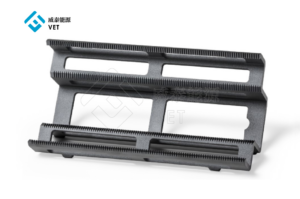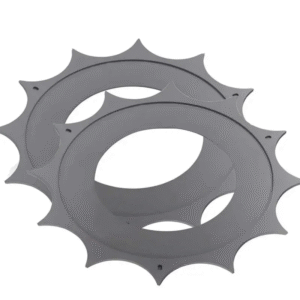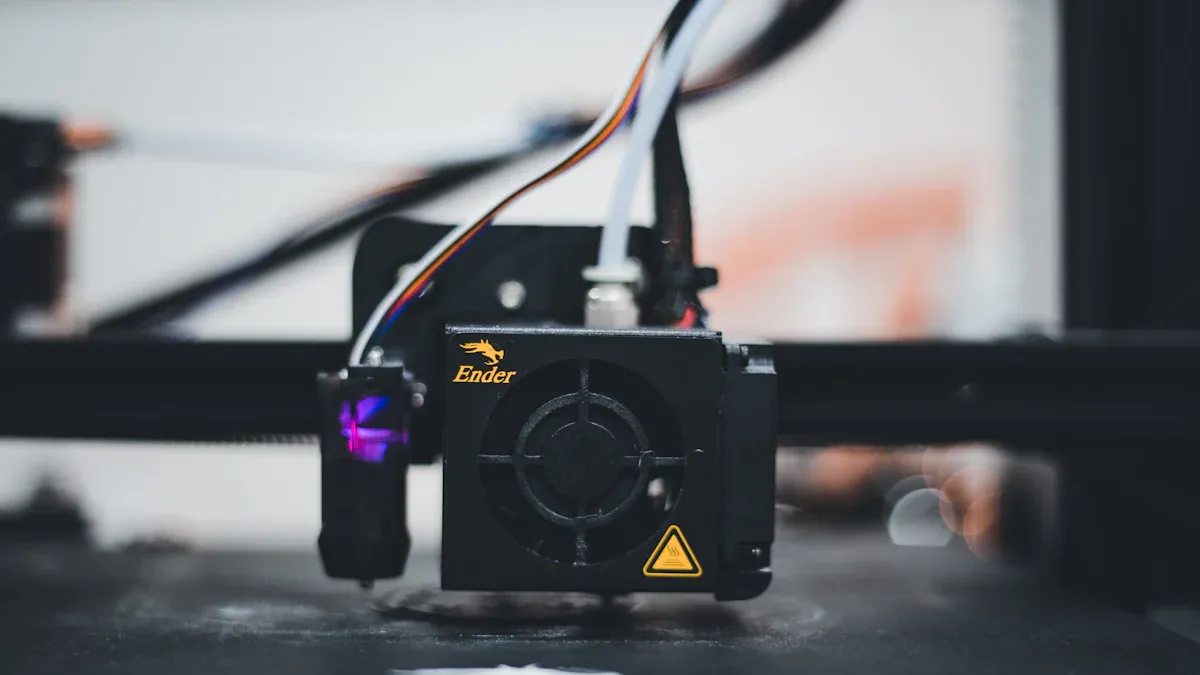
You want your 3D printer to last longer and work better. Many users say a Silicon Carbide Nozzle gives you tough durability, steady print quality, and works well with abrasive filaments. Some people mention the higher cost and a few practical issues, but most agree the benefits stand out.
Key Takeaways
- Silicon Carbide Nozzles last much longer than regular nozzles and keep print quality steady, especially when using tough or abrasive filaments.
- These nozzles reduce maintenance time and let you print with special materials like carbon fiber or metal-filled filaments without worry.
- The higher cost and limited size options may not suit casual users, but heavy users and professionals benefit from their durability and reliable results.
Silicon Carbide Nozzle Benefits Reported by Users
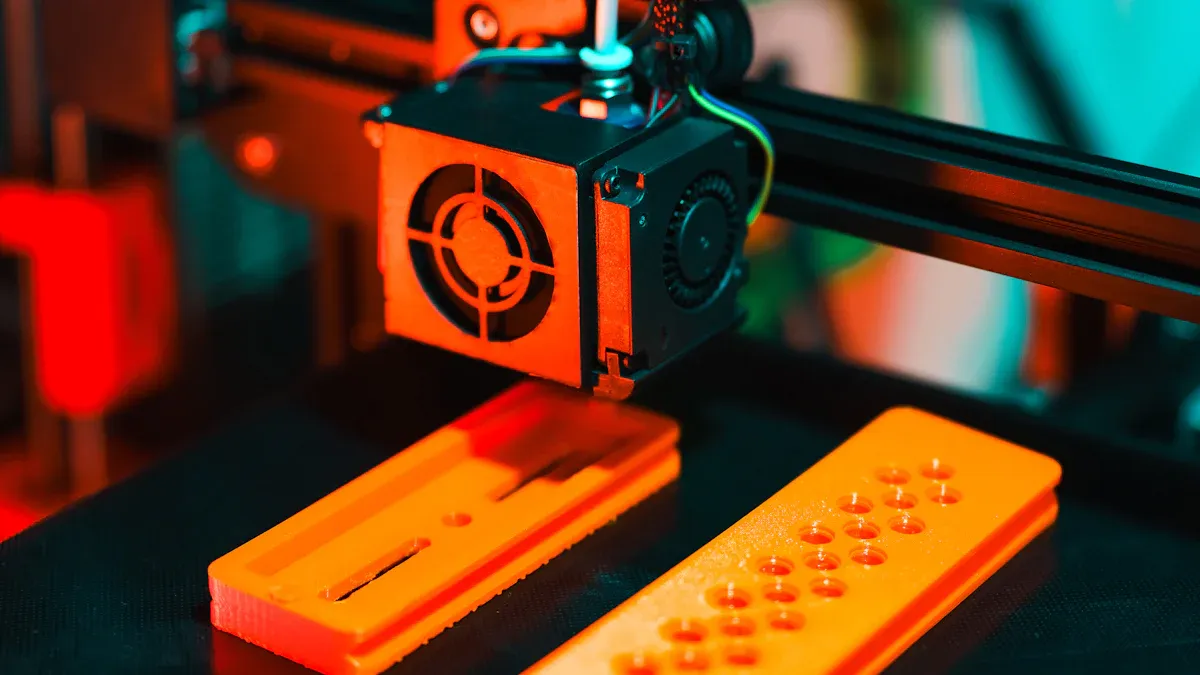
Exceptional Durability and Lifespan
You want a nozzle that can handle tough jobs. Many users say a Silicon Carbide Nozzle lasts much longer than regular brass or steel nozzles. You can print for hundreds of hours without seeing much wear. This means you do not have to worry about your nozzle breaking down in the middle of a big project. Some people even say their nozzle looks almost new after months of use.
Tip: If you print with hard or gritty filaments, you will notice the difference in how long your nozzle lasts.
Consistent Print Quality Over Time
You care about how your prints look. A Silicon Carbide Nozzle helps you get smooth and clean prints, even after many uses. The nozzle keeps its shape, so your printer can lay down each layer just right. You do not have to worry about rough edges or uneven lines. This makes your models look sharp and professional every time.
- Your prints stay high-quality, even after weeks of printing.
- You spend less time fixing problems with your printer.
High Compatibility with Abrasive Filaments
You might want to try special filaments like carbon fiber, glow-in-the-dark, or metal-filled types. These materials can wear out normal nozzles fast. With a Silicon Carbide Nozzle, you can use these abrasive filaments without worry. The nozzle stands up to the challenge and keeps working well.
| Filament Type | Works Well with Silicon Carbide Nozzle? |
|---|---|
| Carbon Fiber | ✅ |
| Glow-in-the-dark | ✅ |
| Metal-filled | ✅ |
| Standard PLA/ABS | ✅ |
You get more freedom to experiment with new materials.
Reduced Maintenance and Fewer Replacements
You probably do not enjoy stopping your print jobs to fix or replace parts. With a Silicon Carbide Nozzle, you spend less time on maintenance. You do not have to swap out your nozzle as often. This saves you money and keeps your printer running longer.
Note: Many users say they only need to clean their nozzle once in a while, even after lots of printing.
You can focus on your projects instead of repairs.
Silicon Carbide Nozzle Drawbacks from User Reviews
Higher Upfront Cost
You might notice the price right away. A Silicon Carbide Nozzle usually costs much more than a regular brass or steel nozzle. If you only print sometimes or work with basic materials, you may not want to spend extra money. Many users say the high price makes them think twice before buying.
- You pay more at the start.
- You may not see savings unless you print a lot or use tough filaments.
Note: Some users feel the long lifespan makes up for the cost, but others just want a cheaper option.
Occasional Clogging or Wear Issues
You expect a nozzle to work smoothly every time. Most of the time, a Silicon Carbide Nozzle does a great job. Still, some users report clogs, especially with certain filaments or if the printer settings are not perfect. Sometimes, a tiny piece of filament gets stuck, and you have to clean it out.
- Clogs can happen if you use low-quality filament.
- You may need to adjust your print settings for best results.
A few users also mention that, after a long time, the nozzle can show signs of wear. This does not happen often, but it is possible.
Limited Sizing and Availability
You might want a special size for your project. Right now, you will find fewer size choices for Silicon Carbide Nozzles than for brass or steel ones. Some stores do not carry them at all. If you need a rare size, you may have to wait or look in several places.
| Nozzle Material | Size Options | Easy to Find? |
|---|---|---|
| Brass | Many | Yes |
| Hardened Steel | Many | Yes |
| Silicon Carbide | Few | Sometimes |
Tip: Check online shops or specialty stores if you cannot find the size you want nearby.
Installation and Learning Curve
You may find the first installation tricky. A Silicon Carbide Nozzle can feel different from what you are used to. Some users say it takes practice to get the nozzle seated just right. You might need to adjust your printer’s temperature or speed settings, too.
- You may need to read the instructions carefully.
- You could spend extra time learning how to get the best prints.
If you are new to 3D printing, this learning curve might feel a bit steep at first. Most users say it gets easier with practice.
Silicon Carbide Nozzle Compared to Other Materials
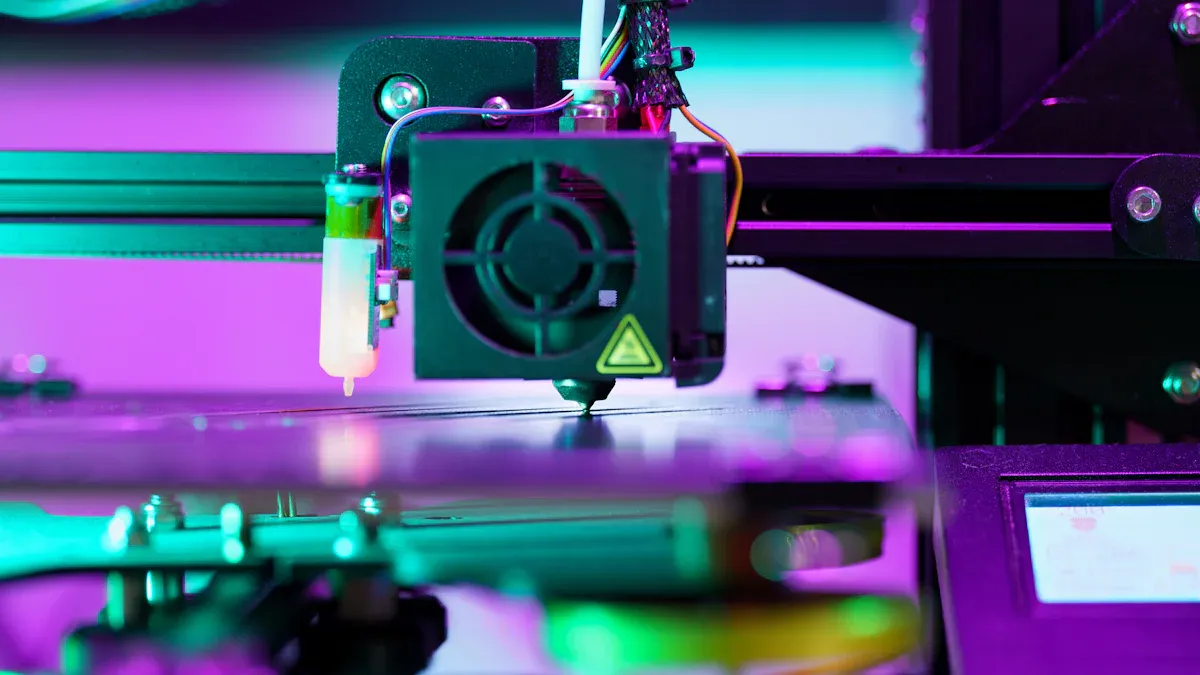
Versus Brass, Hardened Steel, and Ruby Nozzles
You have a lot of choices when it comes to 3D printer nozzles. Each material brings something different to the table. Let’s break it down:
| Nozzle Type | Durability | Cost | Best For |
|---|---|---|---|
| Brass | Low | Low | Everyday printing |
| Hardened Steel | Medium | Medium | Some abrasive filaments |
| Ruby | Very High | Very High | Extreme durability |
| Silicon Carbide | High | High | Abrasive filaments |
Brass nozzles work well for basic jobs. They wear out fast if you use tough filaments. Hardened steel lasts longer, but you might see a drop in print quality over time. Ruby nozzles give you top durability, but the price can be shocking. A Silicon Carbide Nozzle sits between steel and ruby. You get strong wear resistance and good print quality, but you do not pay as much as you would for ruby.
Tip: If you print with carbon fiber or glow-in-the-dark filament, you will want something tougher than brass.
User Preferences by Application Type
You might wonder which nozzle fits your needs. Here’s what most users say:
- If you print with standard PLA or ABS, brass works fine.
- If you use abrasive filaments sometimes, hardened steel or a Silicon Carbide Nozzle is a smart pick.
- If you print with abrasive materials all the time, or you want the best print quality, many users choose silicon carbide or ruby.
- For hobby projects, you may not need to spend extra. For business or pro work, investing in a better nozzle saves time and money.
You can match your nozzle to your printing style. That way, you get the best results for your projects.
User Recommendations and Best Practices for Silicon Carbide Nozzle
Ideal Users and Use Cases
You might wonder if a Silicon Carbide Nozzle fits your needs. This nozzle works best for people who print a lot or use tough filaments. If you run a small business, make prototypes, or use your printer every day, you will see the most value. You also get great results if you like to experiment with carbon fiber, metal-filled, or glow-in-the-dark filaments.
Here are some common use cases:
- Printing with abrasive filaments like carbon fiber or metal blends
- Running long print jobs without stopping for maintenance
- Needing sharp, clean details in every print
- Working in a classroom or makerspace where many people use the printer
If you only print simple models with PLA or ABS, you may not need this nozzle. For heavy use or special materials, it can save you time and money.
Tips from Experienced 3D Printing Users
You can get the best results by following a few simple tips:
- Always check your printer’s temperature settings. Some filaments need higher heat with a Silicon Carbide Nozzle.
- Clean your nozzle after every few prints. Use a soft wire or cleaning filament to keep it clear.
- Start with slow print speeds until you know how your printer handles the new nozzle.
- Store extra nozzles in a dry place to avoid dust or damage.
Tip: If you see clogs, try raising the temperature a little or use better quality filament.
You will learn what works best for your setup as you go. Many users say practice makes perfect!
You get strong durability, steady print quality, and less maintenance with a Silicon Carbide Nozzle. Some users mention the higher price and limited sizes. If you print with abrasive filaments or need reliable results, this nozzle makes sense. For casual printing, you might not need it.
- 👍 Pros: Long lifespan, great print quality, works with tough filaments
- 👎 Cons: Higher cost, fewer size options
FAQ
How do you clean a silicon carbide nozzle?
You can use a soft wire or cleaning filament. Heat the nozzle, then gently push the cleaner through. Avoid using sharp tools.
Can you use silicon carbide nozzles with any 3D printer?
Most 3D printers accept standard nozzle sizes. Check your printer’s compatibility before buying. Some printers need special adapters.
Do silicon carbide nozzles improve print speed?
You might notice smoother prints, but print speed stays about the same. The main benefit is durability, not faster printing.


